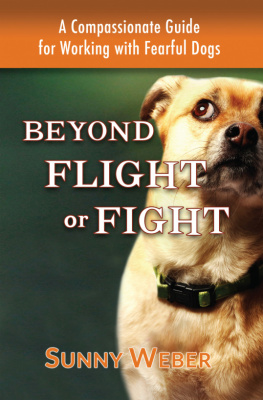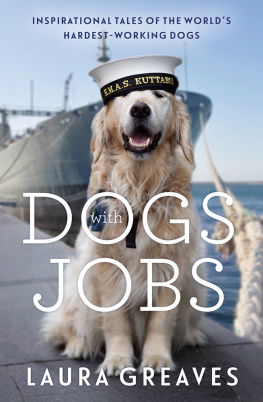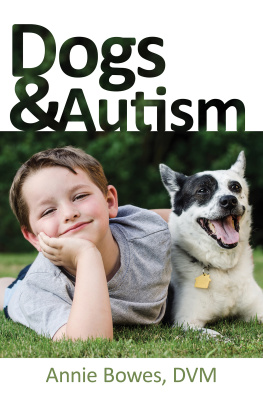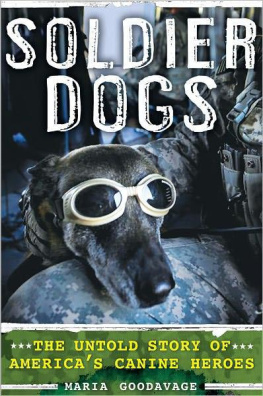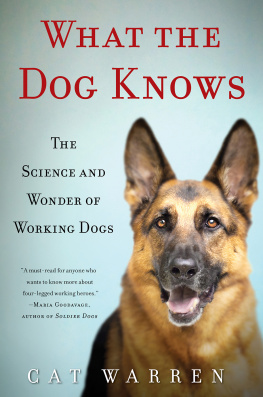First published 2013
Exisle Publishing Limited,
P.O. Box 60-490, Titirangi, Auckland 0642, New Zealand.
Moonrising, Narone Creek Road, Wollombi, NSW 2325, Australia.
www.exislepublishing.com
Copyright Maria Alomajan 2013
Maria Alomajan asserts the moral right to be identified
as the author of this work.
All rights reserved. Except for short extracts for the purpose of review, no part of this book may be reproduced, stored in a retrieval system or transmitted in any form or by any means, whether electronic, mechanical, photocopying, recording or otherwise, without prior written permission from the publisher.
National Library of New Zealand Cataloguing-in-Publication Data
Alomajan, Maria, 1970-
Dogs in action: working dogs and their stories/Maria Alomajan.
Includes bibliographical references.
ISBN 978-1-927187-99-9
1. Working dogsAnecdotes. 2. Hunting dogsAnecdotes.
I. Title.
636.70886dc 23
Text design and production by IslandBridge
Cover design by Christabella Designs
EPub Edition 2013 ISBN: 9781775591115

To the selfless human volunteers and all the phenomenal dogs in the world who excel at jobs which serve humans and to which they are devoted until the end, my deepest and most sincere gratitude. Thank you.
Beauty without Vanity,
Strength without Insolence,
Courage without Ferocity,
and all the virtues of Man without his Vices.
Epitaph to a Dog (Lord Byron)
Introduction
Dogs are the only species on this planet which lives and works with humans in such a deep, meaningful and all-encompassing way.
My first experience with a working dog was with a very handsome German shepherd named Kurt. Actually, Kurt was a failed police dog so wasnt really a working dog he wasnt up for the serious stuff, but he was our awesome family pet.
Although he didnt pass police academy, clearly Kurts tracking training had worked because he would either follow us to or find us at school (the only dog belonging to any of the hundreds of children at our primary school who did such a thing). I only wish at the time I had known what that meant, but instead I was always embarrassed to be called in by the principal again to take Kurt home at lunchtime. I can still see him waiting by the fence at the bottom of the sports field.
He was the focus of endless search and retrieve missions, as many an early morning would see pyjama-clad humans cycling the streets calling for the runaway dog who had escaped, seeking a bitch in heat. On one occasion he even crashed through a plate-glass window to embark on a procreation mission!
Kurt drank from the toilet bowl, found our missing cats, stole the neighbours Sunday roast, played with us, went jogging with Mum and never so much as curled a lip if we stepped on or fell all over him. The only thing we remember him being afraid of was big trucks he would freeze and cower if one went past.

Image B: Kurt, still handsome as an old boy.

Image C: Jet at the beach.
He had a habit of engulfing the entire head of one of our cats in his mouth and then releasing it, seriously covered in slobber. This was a slightly disturbing sight for us, yet obviously comfortable for the two of them, as the cat named Lucky never stopped approaching him and he never stopped doing it.
At one stage we had five German shepherds at home I think some of them may have been pups from his wayward travels...
Kurt was just always there. We never had any discussion about the fact he was just a dog. He wasnt any different, he was just one of us, and I am eternally grateful to my mum for making this the foundation for my relationship with animals.
So thats where my love of and keen interest in working dogs started. I loved the idea Kurt could have been a police dog, but also loved it that he came to live with us instead.
A few wonderful dogs later and my current boy Jet is very cool, extremely handsome and has an awesome work drive. We have tons of fun learning new stuff all the time. I had hoped he could be a working dog but hes too much of scaredy-cat to do the tough stuff, such as search and rescue, and turned out to be too much of a foodie to look for truffles. He has, however, to my surprise, excelled in front of the camera and starred in TV commercials and several photo shoots (not all my own). So thats not bad for a beaten-up, starving street puppy rescued from the wrong side of the tracks.
I love to watch dogs work. Seeing them in action, using their nose, their ears, their awesome brain working things through, figuring things out they are so clever, focused and driven. They read the world in a way we humans cant, communicating with us and training us in ways we still struggle with in return.
To anyone reading this book who may be in doubt, I can assure you these dogs love their jobs, they come alive when theyre working and clearly thrive and equally enjoy their downtime afterwards. As the expression goes, they work hard and play hard. Every single person I met or spoke to in researching this book reinforced to me that the work must always and forever be fun for the dogs. They also said theirs was the most handsome/beautiful and talented dog on the planet ... and each of them was right!
The most important thing about the work we do with our dogs is that they enjoy the work. Bottom line.
Peta Clarke

At twelve years of age, Blaze has run over 40,000 kilometres (nearly 25,000 miles). An incredible feat, which seems more astonishing when you see her petite frame all snuggled up in a fleecy blanket in the back of the car or on the master bed. Looking at her it would be hard to guess that this gentle, small girl with the greying muzzle and beautiful face has such endurance, stamina and leadership skills.
Blaze is a semi-retired Alaskan husky sled dog who runs as lead dog and has completed six Iditarod challenges and four Yukon Quests.
Probably the oldest form of work for a dog is pulling a sled. Evidence of harnessing dogs for transportation dates back to 2000 BC, and archaeological evidence from Canadian Thule sites depict sleds fashioned from whalebone and sealskin.
When reviewing history, certainly sled dogs played a large role in world events such as the conquest of both the North and South Poles. Roald Amundsen, the Norwegian Arctic and Antarctic explorer, used sled-dog teams when he successfully reached the South Pole.
Helmer Hanssen, who was responsible for the welfare of Amundsens sled dogs on the South Polar expedition recorded in his notes: Dogs like that, which share mans hard times and strenuous work, cannot be looked upon merely as animals. They are supporters and friends. There is no such thing as making a pet out of a sledge dog; these animals are worth much more than that.
As true as those words were then, they are now.


